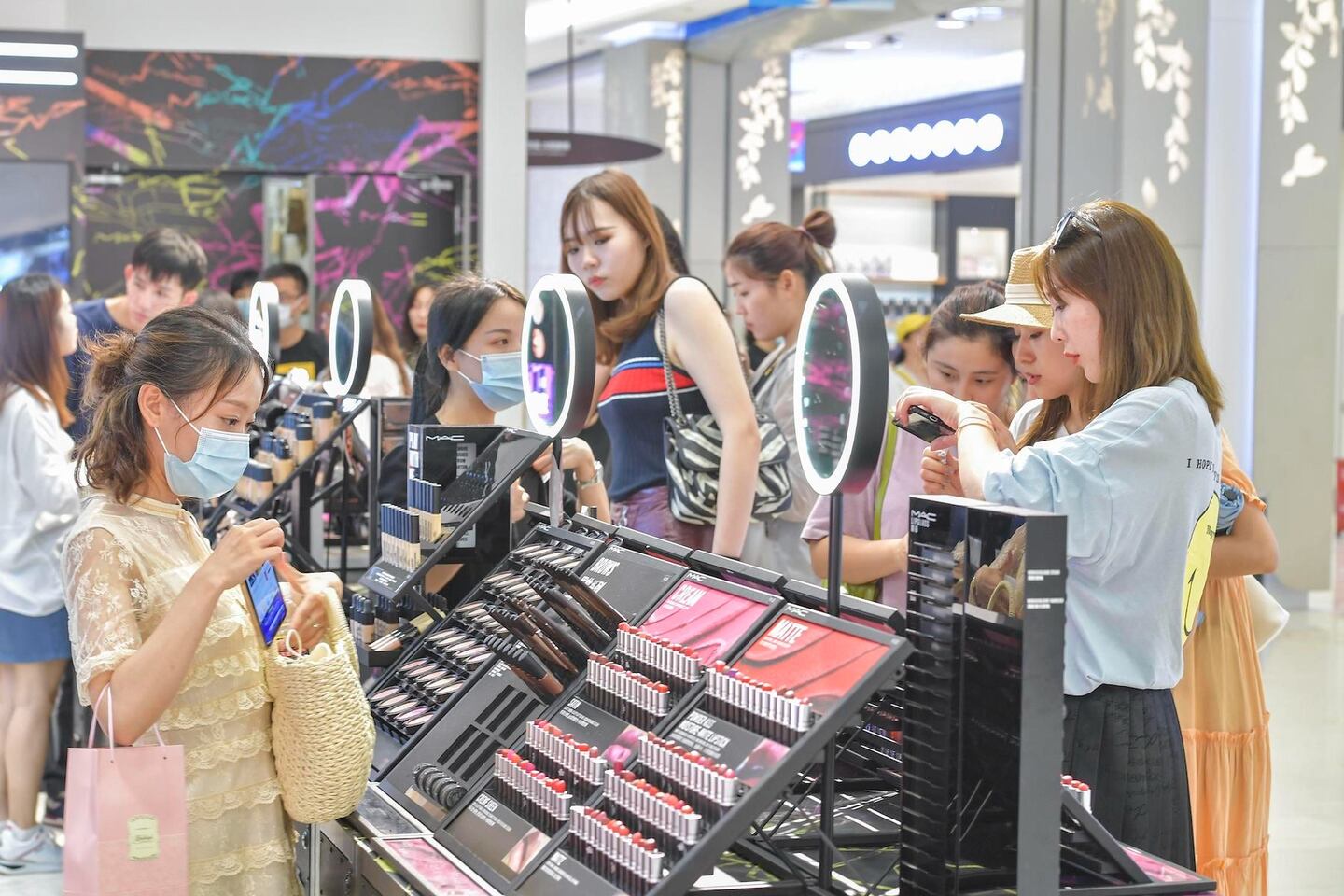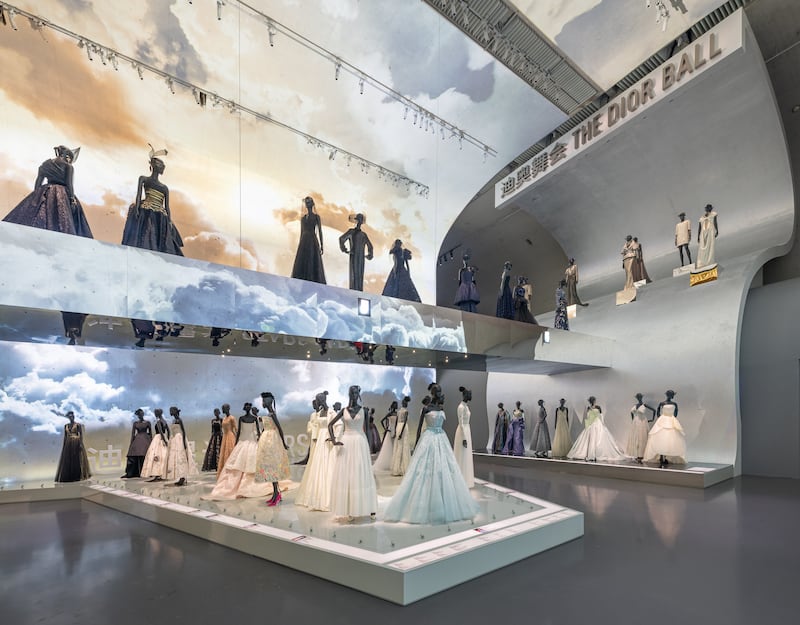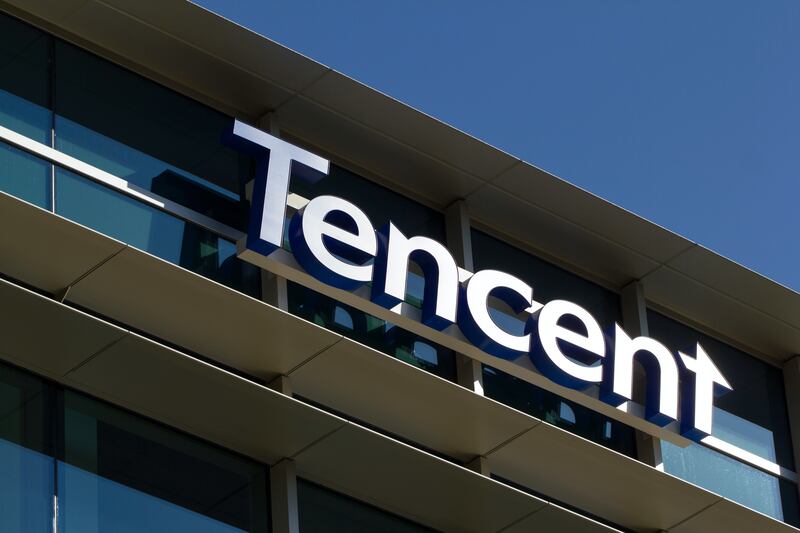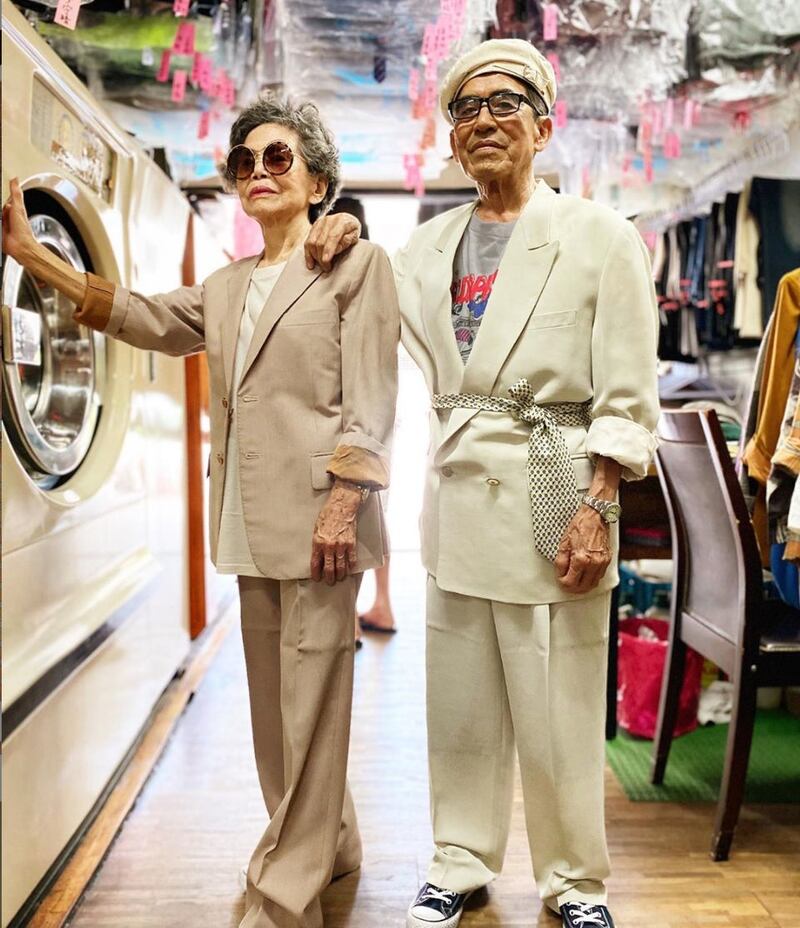
The Business of Fashion
Agenda-setting intelligence, analysis and advice for the global fashion community.

Agenda-setting intelligence, analysis and advice for the global fashion community.

SHANGHAI, China — It has become a familiar story in recent years. Whenever a niche, independent beauty brand builds a loyal audience of fans, based on clever marketing and social media savvy, international conglomerates are quick to come knocking.
In the last 12 months alone, beauty giants have spent billions adding to their stable of brands. Coty paid $600 million for a majority stake in the Kylie Jenner-fronted Kylie Cosmetics and $200 million for a minority stake in Jenner's sister Kim Kardashian's KKW Beauty brand. The M&A wave continued when Shiseido acquired Drunk Elephant for $845 million and Estée Lauder shelled out $1.1 billion for Korean company Have & Be Co., while Puig bought a majority stake in Charlotte Tilbury.
Meanwhile, in the largest beauty market in the world, China's domestic beauty brands continue to proliferate, buoyed by consumption trends that are propelling them to higher sales and an increase in market share. Yet, surprisingly, there hasn't been the same level of interest in C-Beauty brands as acquisition targets.
China's share of the global beauty market could increase to 66 percent over the next five years.
As they gain traction with enthusiastic young women in what is arguably the single most important consumer demographic out there, logic would suggest that multinationals should be in hot pursuit of the highest performing brands among them — but so far they are not. So why the hesitation?
ADVERTISEMENT
“Maybe some of the domestic players were just too small to this point, but I think it’s coming,” said Lauren Hallanan, head of marketing at WeChat management firm Chatly.
Other analysts agree that it's only a matter of time before the conglomerates come calling. The question is: will they come fast enough?
The Rise of Domestic Beauty Conglomerates
When international corporations do come looking for prime investments in the C-Beauty space, they may find they are beaten to the punch by local Chinese players who have witnessed or experienced the sector’s extraordinary growth in recent years, and now have ambitions to build their own house of beauty brands under their umbrella.
Less than two years ago, rumours swirled that L'Oréal was in talks to buy C-Beauty unicorn Perfect Diary — which has a valuation of over $2 billion following its latest capital infusion in April this year — but no deal was forthcoming. When asked about the deal, Perfect Diary Marketing Vice President, Christy Sun, told BoF: "We don't seek any merger, acquisition or buyout … this is not our main focus."
But if the rumours were accurate, there could be any number of reasons why a deal was not secured — from the terms of the deal to the price. It may be that Perfect Diary never wanted to be bought by the likes of L'Oréal Group in the first place. Or could it be that they simply want to be the L'Oréal Group of China?
Perfect Diary parent company, Yatsen Global “definitely has the ambition to [become China’s answer to] L'Oréal or Estée Lauder,” Hallanan claimed, pointing to the fact that Yatsen Global executives said as much at a press conference to launch the Abby’s Choice brand in June, mentioning the addition of brands to its portfolio and overseas expansion as company goals.
“They want to have a whole portfolio of brands. The fact that they have gone through multiple rounds [and that] there are rumours about an IPO, I feel as though they are raising funds, not only to make [their current two brands, Perfect Diary and Abby’s Choice] bigger, but potentially to launch other brands, or buy other brands,” she added.
ADVERTISEMENT
Less well-known, but no less ambitious is fellow Guangzhou-based beauty player Meishang Group, which was founded in 2018 and earlier this year closed its Series A round of 200 million yuan (or $28.5 million at currently exchange rates, following an angel round of 100 million yuan invested by Sequoia Capital, among others). The investment was sought in order to “consolidate Meishang’s multibrand construction” according to investment portal 36Kr.
In addition to its own C-Beauty brand Colorkey, which saw sales top 200 million yuan ($28.5 million) on Tmall in its first year of operations, Meishang has already acquired Korean brand Superface and Taiwan’s Lab101.
“I think there will be a number of new colour cosmetics domestic conglomerates in China that will become more active in acquiring new domestic brands or overseas brands,” said Deloitte China partner, Crystal Wang.
Chinese beauty giant Shanghai Jahwa is a likely contender to begin looking at more acquisitions, following a period in which it has worked to rejuvenate its own brands, including Herborist and Dr Yu, as well as pivoting to digital channels.
One of the things that sets C-Beauty brands apart from foreign rivals is their effortless approach to marketing.
With new C-Beauty brands popping up like mushrooms, there’s no shortage of targets for these domestic players, or their international rivals, though the sheer pace of development in the market means the targets are moving fast, making them harder to successfully hit.
The Trends Driving C-Beauty’s Boom
Not only is China’s beauty market huge, but its growth trajectory is staggering. According to a report released last October by Morgan Stanley Research, China's share of the global beauty market could increase to 66 percent over the next five years, representing nearly half of global beauty growth.
More recently, figures from a Goldman Sachs report released at the end of June place the value of China’s beauty market at $79 billion in 2019 (which included $33 billion worth of off-shore and cross-border purchases), making it not only the largest market in the world, but twice the size of any other beauty market globally. Even taking into account any potential coronavirus related set-backs to sales in the short term, Goldman Sachs is predicting China’s beauty market will double to $145 billion by 2025.
ADVERTISEMENT
In terms of who is driving this growth, China’s Post-90s generation (often correlated with Gen Z in a Western context) is playing an outsized role. While those born after 1990 comprise only 30 percent of the overall population aged between 15 and 65, the cohort accounts for 60 percent of beauty sales on Tmall, according to figures from Alibaba.
Whereas previous generations of beauty consumers have staunchly favoured foreign beauty brands, first those from Europe and the US, then, more recently, those from Korea and Japan, China’s Post-90s consumers have different priorities. A report released last year by e-commerce player VIPShop showed almost two-thirds of post-90s consumers trust local brands, a much higher percentage than their predecessors.
To this point, foreign conglomerates seem to have been content to maintain their dominance at the top of the pecking order, with European and Japanese brands still dominant in China’s prestige beauty sector, and willingly ceding ground at lower price points to local players that have eaten more into the territory of K-Beauty’s mass market giants.
“Most Chinese brands in the market focus on the mass market and their strategy, in the first phase, is following that of Japanese and Korean brands, continually changing the SKUs and the colour combinations and getting into the market with a really low price,” Deloitte’s Wang said.
One of the things that sets many of these successful young C-Beauty brands apart from foreign rivals, according to Hallanan, is their comparatively effortless approach to marketing. Strategies are localised to China’s unique social media and digital commerce channels, and intuitively tap into the needs of their digital-savvy consumers.
One good example is Chando, the 20-year-old skincare brand owned by Chinese beauty leader Jala Group, which has — along with Perfect Diary — been at the forefront of using “private traffic.” The brand operates thousands of WeChat groups with 500 people in each to stay constantly connected to new and existing consumers, notifying them of new products, promotions and pointing them to sales through Chando’s own WeChat mini-programme.
Some multinationals have been silent on the C-Beauty M&A front because they have been burned before.
Chando's sophisticated use of ads, livestreaming, free product samples, and more to encourage people to follow its WeChat accounts is something international brands just haven't managed to successfully execute yet.
“These big [international] companies have all the money in the world to improve products but the thing international brands have the hardest time with is marketing and branding that really fits for young Chinese consumers. So, [I believe that multinationals] would be buying [C-beauty brands in the future] for the marketing strategies and the audience rather than for the products themselves,” Hallanan explained.
Hallanan suggests another potential target might be Pechoin, an 89-year-old skincare brand privately owned by Shanghai Pehchaolin Daily Chemical Co. According to an April report in Bloomberg, Pechoin’s parent company is currently exploring the option of a minority stake sale to unnamed investors. Having posted 17.7 billion yuan ($2.5 billion) in sales back in 2017, according to Chinese tech news site Ebrun, the company could be an attractive target.
Challenging Terrain for Beauty M&A
One of the main reasons that multinationals have been largely silent on the C-Beauty M&A front in recent years is that they have been burned before, and will be hesitant to jump back into the fray.
L'Oréal invested heavily in Chinese beauty brands from its purchase of Little Nurse (2003), Yue Sai (2004) and Magic Holdings (2014). The latter deal alone cost the French group HK$ 6.5 billion (the equivalent of around $843 million at the time).
In each case, the Chinese beauty acquisitions that promised so much simply fizzled out, with sales and profits declining significantly for the brands in the wake of these deals.
Another reason for the global groups’ silence on the C-Beauty M&A front, according to Mariana Kou, Senator for China at the World Business Angels Investment Forum, is that the rush of domestic private equity and growth of C-Beauty players has raised valuations to a point at which acquisition becomes untenable.
A more popular route for the international conglomerates, thus far, has been to reach Chinese consumers by investing in or acquiring companies from overseas that have a customer base in China.
“A lot of Japanese and Korean brands have more brand equity than Chinese beauty brands, it’s a lot like Chinese KOLs, they rise and fall very quickly,” Kou said. “You don’t know what could happen… a lot of [the buzz generated by these C-Beauty brands] is built on social media and the barrier to entry is very low.”
A high-profile example is Estée Lauder's acquisition of Have & Be Co. for $1.1 billion late last year. Dr Jart+ garners a significant percentage of the latter's $500 million annual sales from the Chinese market, making the deal an investment in China without the risk of investing in an unproven Chinese brand.
All things considered, Wang doesn’t expect a gold rush of inbound M&A for C-Beauty brands. Instead, she says the world should be watching out for the upcoming run on beauty brands — both local and international — that China’s new generation of beauty conglomerates will undertake.
“Chinese companies are going to become more important in the global colour cosmetics and skincare M&A market in the next two to three years, that’s for sure,” she said.
时尚与美容
FASHION & BEAUTY

The scene at Dior's Designer of Dreams Exhibition in Shanghai | Source: Courtesy
Dior Bets on Major Exhibition to Continue China Momentum
Last weekend, Dior opened one of the world's first major physical fashion exhibitions since the widespread outbreak of Covid-19. Described as "a prodigious journey through the world and dreams" of the brand, the opulent show bowed at the Long Museum in Shanghai's artsy West Bund district. The opening drew an impressive attendee list that included influencers Angelababy, Zhao Liying, and Wang Junkai from TFBoys. Distilling over 70 years of Dior history, the show features 275 haute couture dresses and curated ephemera alongside installations by Chinese artists such as Xu Bing, Gao Weigang, and Liang Yuanwei. (Jing Daily)
Shiseido Looks to China’s Online Model for Post-Pandemic Recovery
Shiseido is pumping up its e-commerce presence amid a "deep crisis" in the beauty business, with the Japanese company looking to its China strategy as a post-pandemic model for growth. The 148-year-old beauty giant sees its online proportion of overall sales growing to 30 per cent in two or three years if current conditions continue, from about a fifth right now, according to Chief Executive Masahiko Uotani. The reforms for Shiseido, which has relied heavily on department-store sales, involve training beauty consultants to use live streaming and social media, working more closely with retailers on the tech-enabled shopping experience, and investing in new marketing content for online, Uotani said. All strategies the company has implemented in China. (Inside Retail Asia)
科技与创新
TECH & INNOVATION

Tencent | Source: Shutterstock
Tencent Bids $2.1 Billion to Improve Search Credentials
The Chinese social-media giant offered to pay $2.1 billion on Monday to buy the remainder of New York-listed search engine Sogou. Tencent already owns 39 percent of the company and controls more than half of its voting rights. The two are already tightly linked as Sogou is the default search engine in many of them and has exclusive access to content within WeChat. Around 35 percent of Sogou's search traffic came from Tencent properties as of December. That could pose a threat to Baidu, China's leading search engine. Enhanced search capability will allow Tencent to offer better content to help keep users within its apps. Bytedance also introduced its own search engine last year. (The Wall Street Journal)
Short Video Battle Heats Up
For years, short video in China has been synonymous with two major names: Douyin and Kuaishou. But WeChat Channels, which soft-launched in January, is on track to have 300 to 400 million users within a year, according to a social media post attributed to Allen Zhang, the "father" of WeChat.WeChat Channels was introduced at a time when the demand for video content a minute or shorter in length was accelerating. Chinese people are now spending 16 more hours per month on their phones compared to a year ago, and short video apps have seen a surge while more traditional internet services by tech giants such as Baidu, WeChat, and Alibaba saw zero or slightly negative growth, according to research firm QuestMobile. (South China Morning Post)
AI Start-ups Thrive in Spite of Blacklisting
Leading artificial intelligence start-ups Megvii and SenseTime are raising money and winning overseas contracts despite landing on a US blacklist last year. Megvii, one of eight companies put on the US commerce department's entity list nine months ago, is in talks with new investors to raise funds after postponing an initial public offering in Hong Kong earlier this year, meanwhile, Alibaba-backed facial recognition software company SenseTime turned to private investors to raise up to $1 billion in capital this year. The US has accused the companies of aiding the "repression, mass arbitrary detention and high-technology surveillance" of Uighurs in the western Chinese region of Xinjiang. (Financial Times)
消费与零售
CONSUMER & RETAIL

SKP Beijing department store | Source: Courtesy
SKP Surprises with Plans to Open in Kunming
SKP, one of China's flagship luxury shopping mall players, has announced its intention to open up in Kunming, the capital of southwest Yunnan province, with construction on the new property set to start within a year and the opening of Kunming SKP anticipated prior to 2024. It will be the fourth SKP mall in China after Beijing, Xi'an and Chengdu. Last year, Plaza 66 opened its doors in Kunming with more than 300 brands, 30 percent of them opening their first stores in Kunming, including many luxury brands. It's only one month since construction began on the Chengdu SKP project, leaving observers surprised that SKP would open two southwest malls in such quick succession, especially given Kunming is less of a strategic hub for luxury than neighbouring Chengdu. (Ladymax)
Burberry to Open 'Social Retail' Store in Shenzhen
This is the first store opened as part of a collaboration signed between Burberry and Tencent late last year and not only demonstrates Tencent's interest in more deeply cultivating ties in the luxury industry but will also be an interesting gauge of how Tencent will look to compete with frontrunner Alibaba in the "new retail" space. According to Burberry, a dedicated WeChat mini programme can be used by customers to unlock exclusive content and personalised experiences and share them with their communities. (Marketing Interactive)
政治,经济与社会
POLITICS, ECONOMY, SOCIETY

Chang Wan-ji and Hsu Sho-er | Source: @wantshowasyoung
Charming Couple Win Instagram By Modelling Abandoned Clothes
An octogenarian couple who own a laundrette in central Taiwan have garnered a significant following on Instagram after opening an account that shows them modelling clothing that customers have abandoned at their laundrette, styled and photographed by their 31-year-old grandson. Their outfits are eclectic, funky and fun. Their 136,000 followers on Instagram and scores of mainland Chinese netizens have been alerted to their growing fame via media reports and are falling for the youthful and insouciant poses Chang Wan-ji and Hsu Sho-er strike around their laundry for their photo shoots. (The New York Times)
Chinese Cities Lead Global Race to Rival Silicon Valley
Beijing, Shanghai, Shenzhen and Hangzhou are all global start-up cities poised to challenge Silicon Valley's long-time dominance in attracting venture capital and entrepreneurial talent. Of the top five cities in the world (outside the US) with the largest venture capital investments last year, three of them – Beijing, Shanghai and Hangzhou – are Chinese and China is now home to 25 percent of the world's unicorn start-ups. (Quartz)
China Decoded wants to hear from you. Send tips, suggestions, complaints and compliments to our Shanghai-based Asia Correspondent casey.hall@businessoffashion.com.
With consumers tightening their belts in China, the battle between global fast fashion brands and local high street giants has intensified.
Investors are bracing for a steep slowdown in luxury sales when luxury companies report their first quarter results, reflecting lacklustre Chinese demand.
The French beauty giant’s two latest deals are part of a wider M&A push by global players to capture a larger slice of the China market, targeting buzzy high-end brands that offer products with distinctive Chinese elements.
Post-Covid spend by US tourists in Europe has surged past 2019 levels. Chinese travellers, by contrast, have largely favoured domestic and regional destinations like Hong Kong, Singapore and Japan.